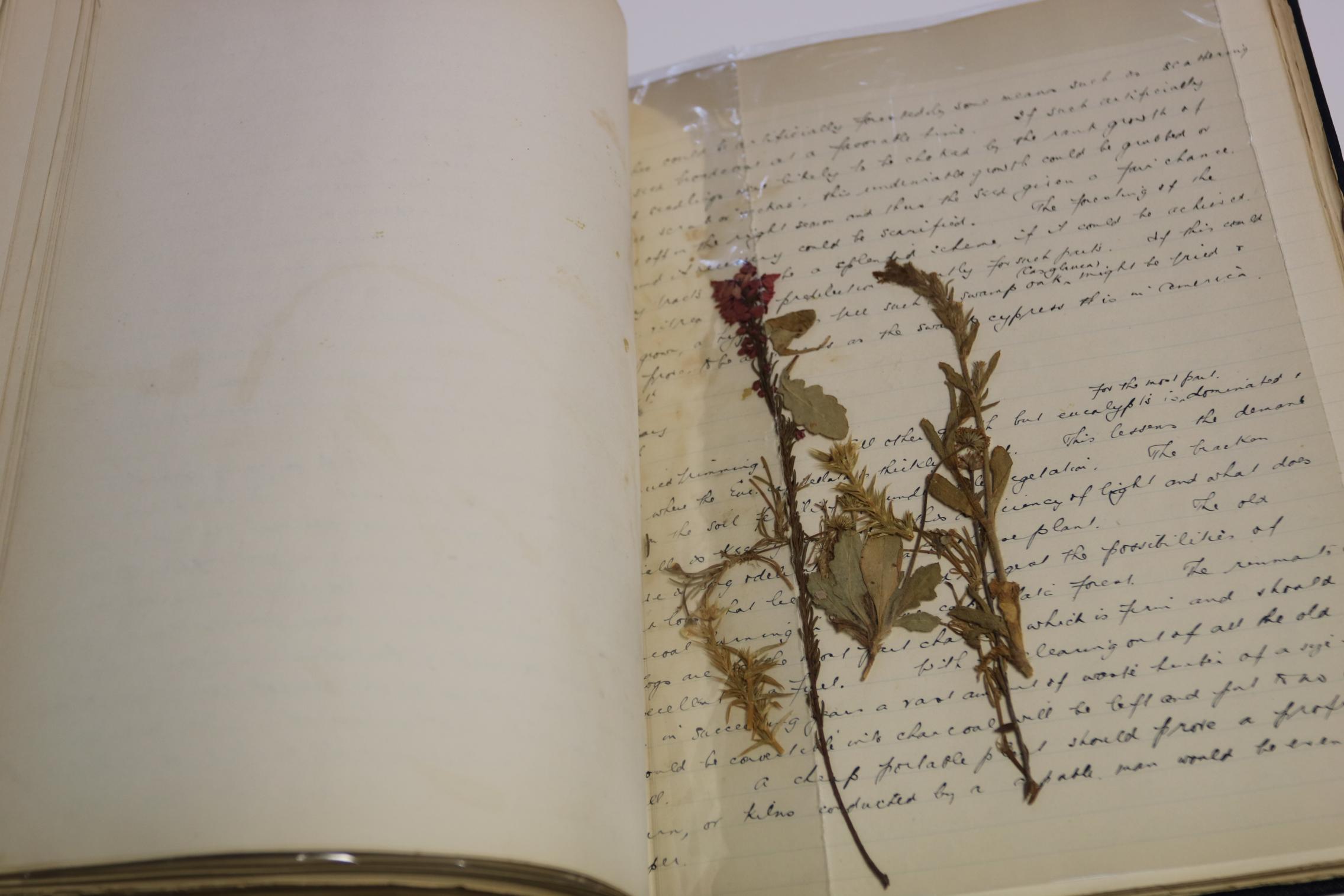World Digital Preservation Day
Digital preservation recognises that the digital research output and associated intellectual property needs to outlast the medium on which it is created.
At a special session to celebrate World Digital Preservation Day, University Archivist Lee Amoroso and Alexis Tindall, Manager, Digital Innovation, invited researchers and other members of our university community to consider how their research legacy would be preserved. Lee showcased valuable and lovely research materials from the last century or more that are preserved in the library’s Special Collections & Archives, and provided examples of how they remain useful today.
Highlights include the forest diary of Ronald George McKail, a promising forestry researcher killed in the First World War. The hand-written record of his 1912-13 observations in mid-north forest reserves, including Bundaleer, Yarcowie, and Penola, is interleaved with dried local flora samples (pictured). This diary has proven useful for historians researching regional afforestation proposals nearly 100 years later. Similarly, the collections of Marcus Oliphant, whose work on nuclear reactions forms the basis for the production of nuclear energy, continue to attract regular attention from researchers today.

Ronald George McKail Forest Diary, University of Adelaide Library, MSS 634.9 M153
These collections include records of research, observations, and correspondence with collaborators. In 2020, researchers use digital tools for almost all of these activities. Collecting today’s work involves fewer leather-bound notebooks and archive boxes, and more emails, data, and associated analysis. Preserving those records for the future throws up many challenges, well beyond backing up files. Between deterioration of storage media, changing file formats, and the challenge of preserving contextual information, digital preservation is a key contemporary challenge.
The University Library is part of the global Digital Preservation Coalition, who remind us that digital preservation involves storing data, considering format migration and other methods to help it remain readable as software changes over time, taking measures to ensure the data can be trusted, and community engagement to encourage preservation intervention in a timely fashion.
In contrast to some spectacular digital preservation failures involving laser discs and floppy discs, Alexis shared ways that collections specialists are successfully preserving digital cultural heritage. This includes the amazing work of the National Library of Australia’s Trove team in preserving the Australian Web Archive, giving access to everything from the .au domain since 1996. The audience enjoyed Swinburne University’s Play it Again research initiative that preserves ground-breaking and influential Australian and New Zealand computer games of the 1980s. That team and others are using emulation, or recreation of old computer systems using cloud computing and other methods, to access software, including games, computer design programs and similar files, that are incompatible with 2020 operating systems.
The library provides a range of tools for our community, including support for research data management planning, institutional repositories, and specialist advice. Early and frequent engagement with the library, and proactive preservation measures are the best way to preserve your digital output. Lee explained that many of our research collections were brought into the library after their creator has passed, sometimes decades after their creation. We won’t be able to work this way in the future. If we are handed portable hard drives, CDs, or data in proprietary file formats years after their creation, that work is lost. The library cares about the future of our researchers’ work, and its use into the future - help us make sure yours is taken care of.
